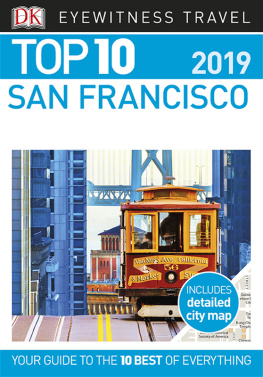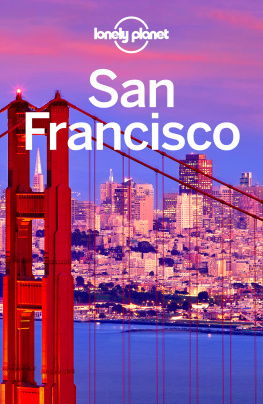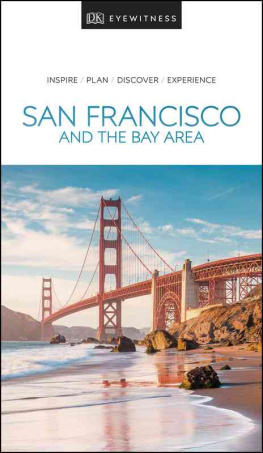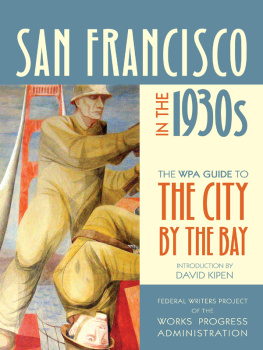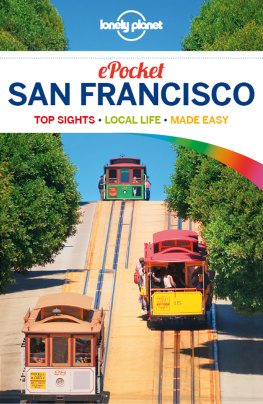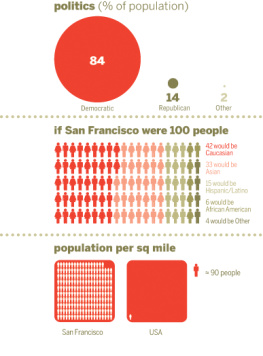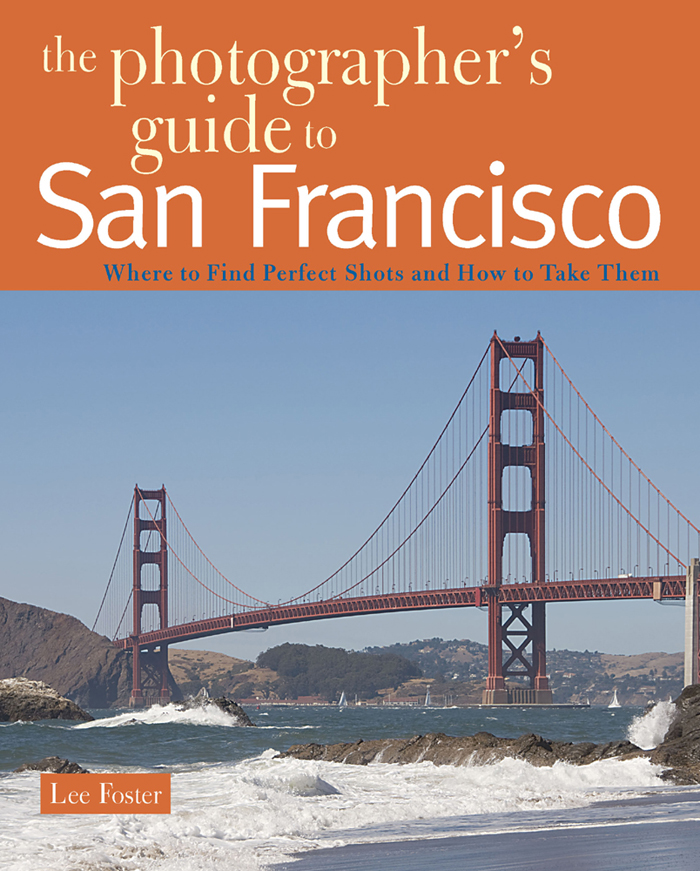Copyright 2009 by Lee Foster
First Edition
All rights reserved. No part of this book may be reproduced in any way by any electronic or mechanical means, including information storage and retrieval systems, without permission in writing from the publisher, except by a reviewer, who may quote brief passages.
ISBN 978-0-88150-814-7
Cover and interior photos by Lee Foster
Book design and composition by S. E. Livingston
Maps by Paul Woodward, The Countryman Press
Published by The Countryman Press,
P.O. Box 748, Woodstock, VT 05091
Distributed by W. W. Norton & Company, Inc.,
500 Fifth Avenue, New York, NY 10110
Manufactured in China
10 9 8 7 6 5 4 3 2 1
Frontispiece: Downtown San Francisco as seen from the early-morning ferry to Oakland
Right: Art-deco detail inside the Paramount Theatre, Oakland
Contents

Carved details enliven the sandstone architecture at Stanford University
Introduction
San Francisco may well be the most photographed city in the world. Almost everyone who comes here, from the casual traveler to the dedicated pro photographer, has an urge to capture its images. This book hopes to address your visual aspirationswhatever they may beand enhance your encounter with the City, as San Franciscans like to call their urban area. Maybe you have a camera at the ready and want to snap some vivid memories. Maybe you are a pro photographer intent on improving your San Francisco portfolio. Or maybe you just want to know where to look for some intriguing views.
First, consider the beauty of the physical setting: hills flanked by ocean and bay with the green expanse of Marin County to the northalmost begging a viewer to break out the camera. Give in to the urge and get out and walk along one of the great urban paths in the world, appropriately named the Golden Gate Promenade, with the Golden Gate Bridge in view. Beyond this, some of the best views are from the water, and any visitor who fails to take a Blue & Gold excursion boat out on the Bay from Pier 39, opening up lovely vistas of the City, will leave visually impoverished.
Second, capture the special cultural freedom of San Francisco. The City was born almost overnight. With the 1848 Gold Rush, a bucolic Spanish mission town was transformed into a major city, and the people who came here from all over the world were energetic, progressive folks. Often the well-educated second sons of prosperous families who wouldnt inherit the ancestral farm or business were sent to the Gold Rush, with strong familial backing, to create a new family prosperity in California. From those early beginnings as a port and immigrant city, San Francisco has always been open to the flavors of the world, and many of the more recent influences have been from Asia and Latin America. Given the diversity in San Francisco, its easy to find ethnically or culturally edgy images to photograph, whether the iconic and accessible foreignness of Chinatown, the Precita Eyes murals of the Mission District, or the gay culture of the Castro.
And third, the pervasive reality of San Francisco is that people are having fun and experiencing the good lifeand joy and fun are worth recording with a camera. Here, those who prepare your meals consider themselves celebrity chefs rather than short-order cooks. The winemaker sees himself (or herself) as an artist whose work appears in your glass rather than on a wall. Visitors to San Francisco are likely to be enjoying themselves as much as the residents. There are good reasons why every travel magazines poll of What is your favorite city? finds San Francisco if not at the top of the list, then at least in the top five. San Francisco in the 21st century is a special America.
Whether youre a photo pro, a dedicated amateur photographer, or a traveler intent on visualizing San Francisco, this book will help you succeed in your mission: capturing terrific, lively images of San Francisco.

Turning a cable car around at the foot of Powell Street
the photographers guide to
San Francisco
Where to Find Perfect Shots and HowtoTake Them
Lee Foster


THE COUNTRYMAN PRESS
WOODSTOCK, VERMONT

This book is dedicated to my children
Bart, Karin, and Pauland to their families,
with whom I enjoy exploring San Francisco


I. The Golden Gate Bridge
The first subject that a visitor will want to photograph in San Francisco is likely to be the Golden Gate Bridge, arguably one of the most lyrical and lovely creations in the long history of bridge building. There are more opportunities to photograph the Golden Gate Bridge than may be immediately apparent.
The first option should be a study of the bridge from Vista Point at the south end, seeing the bridge from the parking lot and perhaps from below by walking down to Fort Point. Beyond that, a fresh-air morning look at the bridge is presented to every walker who ventures out on the Crissy Field walkway, appropriately called the Golden Gate Promenade, extending from the Marina Green/San Francisco Yacht Club to the bridge. From west of the bridge, there are lovely afternoon and sunset views from Baker Beach and other beaches. A parallel afternoon/sunset view from Conzel-man Road in the Marin Headlands will also delight a photographer. And finally, in Part IV of this book youll find suggestions for obtaining views of the bridge from the water, in an excursion boat.
Lets look at all these options in more detail.
Vista Point, South End (1)
Vista Point at the south end of the bridge presents some magnificent views, especially from morning until midafternoon as the light falls on the vermilion-orange structure, whose paint color is officially described as International Orange. It isnt easy to park at Vista Point, so patience may be required. Perhaps consider getting there by taxi and either be dropped off or have the cabbie wait while you shoot.
Walk out to the overlook for vivid photos of the bridge. Then head down the path to the historic Civil Warera Fort Point, where you can get water-level views of the bridge. Next, walk out on the east side of the bridge, or bike over to the west side of the structure to enjoy a scenic view of San Francisco. This east-side view is an effective later-afternoon imagenot of the bridge but of the city itself.




